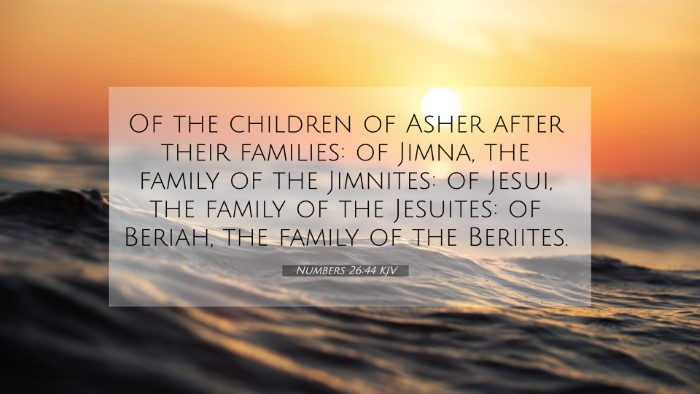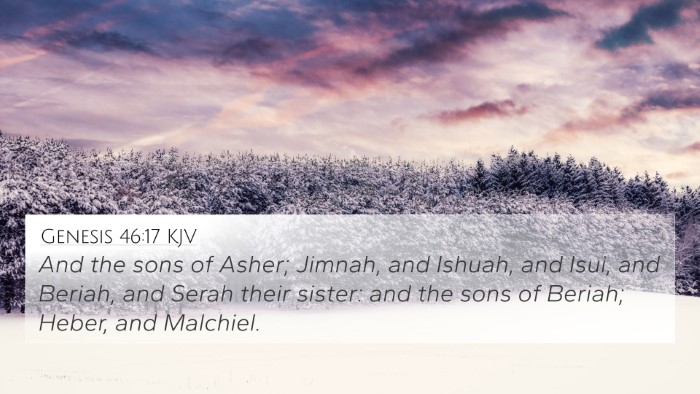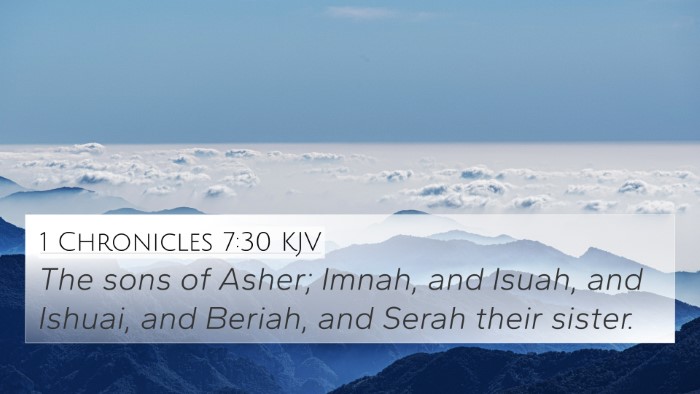Understanding Numbers 26:44
This verse is part of a census conducted by Moses and Aaron, which lists the descendants of Zelophehad within the tribe of Manasseh. Numbers 26:44 reads:
"These are the sons of Joseph after their families: Manasseh and Ephraim." (Numbers 26:44, KJV)
Context and Meaning
The 26th chapter of Numbers is significant as it serves to illustrate the organization of the tribes of Israel prior to their entrance into the Promised Land. The mention of Joseph’s sons, Manasseh and Ephraim, highlights the division and inheritance of the land among the tribes.
Commentary Insights
-
Matthew Henry:
Henry emphasizes that the mention of Joseph's sons not only reflects familial ties but also God's faithfulness in fulfilling His promises. Joseph, who endured much in Egypt, becomes a pivotal figure, with his sons leading the tribes of Israel.
-
Albert Barnes:
Barnes notes the strategic importance of recounting these names. It reminds Israel of their roots and the familial blessings that have survived through trials. The sons of Joseph are given considerable prominence indicating their significant role in the Israelite community.
-
Adam Clarke:
Clarke discusses the importance of Joseph's legacy and how it shapes not just the demographics of the tribes but also the spiritual narratives connected with them. He points out that understanding these genealogies lays groundwork for recognizing God’s covenants.
Cross-References and Related Verses
Understanding Numbers 26:44 involves connecting it with various other scripture passages that elucidate the themes of heritage, promise, and the organization of the Israelite tribes. Here are some relevant cross-references:
- Genesis 48:5: This passage discusses Joseph’s sons and their adoption by Jacob, hinting at the lineage and blessings carried over.
- Deuteronomy 3:13: Highlights the land given to the descendants of Manasseh, reinforcing the inheritance aspect.
- Joshua 14:4: Acknowledges the division of the land under Joshua, bringing to light the significance of the tribes listed in Numbers.
- 1 Chronicles 5:24: It reflects the descendants of Manasseh and their roles in Israel's history.
- Exodus 6:20: Aligns the genealogical lineage of Moses and Aaron with Joseph’s descendants, underpinning God's providence.
- Luke 3:33: A genealogical reference that ties back to Jacob and Joseph, showing New Testament linkages.
- Hebrews 7:14: Mentions Jesus’ lineage through Judah, suggesting thematic connections to the identities of the tribes of Israel.
Thematic Connections
These cross-references highlight the importance of family in the Biblical narrative, emphasizing how each tribe carries forward the themes of promise, identity, and covenant. Such cross-referencing may reveal deeper understandings of God's dealings with His people.
Bible Study Methods for Cross-Referencing
To explore the connections between Bible verses effectively, consider a few valuable tools and methods:
-
Bible Concordance: A useful tool in identifying verses that share similar themes and keywords.
-
Bible Cross-Reference System: A framework that helps in connecting applicable verses systematically.
-
Cross-Reference Bible Study: Engaging with a verse and systematically finding related texts can enhance understanding.
Conclusion
Numbers 26:44 serves as a reminder of God’s ongoing covenant with His people through their ancestors. The connection between generations and the themes of identity and inheritance are not only historical but profoundly spiritual, inviting further exploration of the interconnectedness of scripture. By employing tools for Bible cross-referencing and understanding related verses, one can appreciate the rich tapestry of Biblical narrative and theology.




